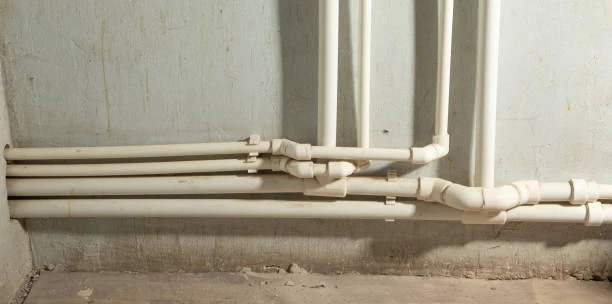Introduction to Smart PPR Piping Systems
Smart PPR piping systems use advanced technology. These systems enhance energy efficiency in various applications. They are crucial in plumbing, heating, and cooling. The integration of smart sensors and data analytics plays a key role. This technology provides real-time monitoring and management. Thus, it optimizes energy use and reduces waste. The focus on plumbing insert for PPR fittings is significant. These inserts improve connections and reduce leaks.
Understanding Energy Efficiency
Energy efficiency means using less energy to achieve the same results. In plumbing systems, this concept applies directly to water and heat management. Efficient systems save money and reduce environmental impact. Smart PPR piping systems improve energy efficiency significantly. These systems monitor flow rates and temperatures, enabling adjustments. For instance, a smart system can lower the temperature on hot days. This dynamic adjustment conserves energy effectively.
Importance of Plumbing Inserts
Plumbing inserts for PPR fittings ensure reliable connections. These inserts enhance the overall performance of piping systems. They help prevent leaks, which is crucial for energy conservation. Leaks waste both water and energy, leading to significant losses. For example, a small leak can increase energy costs over time. Therefore, using quality plumbing inserts is essential for energy efficiency.
Role of Sensors in Smart PPR Systems
Sensors play a vital role in smart PPR systems. They gather data on flow rates, pressure, and temperature. This data helps in making informed decisions. For example, a sensor detects a drop in pressure. This alert can prompt immediate maintenance, preventing further issues. Moreover, smart sensors can analyze patterns in water usage. This analysis helps identify opportunities for energy savings.
Data Analytics for Energy Optimization
Data analytics enhances the efficiency of smart PPR piping systems. It turns raw data into actionable insights. System operators can track usage trends over time. For instance, analytics might reveal peak water usage times. With this information, operators can adjust supply schedules. Such adjustments lead to significant energy savings. In addition, predictive analytics can forecast potential issues. This proactive approach minimizes downtime and energy loss.
Case Studies of Successful Implementations
Several case studies demonstrate the effectiveness of smart PPR systems. In one instance, a commercial building upgraded its plumbing infrastructure. They installed smart PPR piping with advanced sensors and inserts. As a result, they reduced energy consumption by 30%. The plumbing inserts played a key role in preventing leaks. This case highlights the value of investing in smart technologies.
Challenges in Adoption
Despite the benefits, some challenges exist in adopting smart PPR systems. Initial costs can be high for installation and technology. However, the long-term savings often outweigh these costs. Additionally, some users may lack technical knowledge. Training staff on new systems is vital for success. Overcoming these challenges requires commitment and planning.
Future Trends in Energy Efficiency
The future of smart PPR piping systems looks promising. Advancements in technology will continue to improve energy efficiency. Innovations in plumbing inserts will enhance durability and performance. Moreover, the integration of AI and machine learning can optimize operations further. As awareness of sustainable practices grows, more industries will adopt these systems. This shift towards energy efficiency will help in achieving global sustainability goals.
In summary, smart PPR piping systems significantly improve energy efficiency. By focusing on plumbing insert for PPR fittings, these systems enhance connections and reduce leaks. With the use of sensors, data analytics, and innovative solutions, energy savings become achievable. The future holds exciting possibilities for further advancements in this field.
IFAN Products international standards
IFAN products strictly adhere to a comprehensive range of international standards, encompassing ISO 15874, EN 15874, ASTM F2389, DIN 8077/8078, GB/T 18742, NBR 15884, ISO 15494, EN ISO 15494, GB/T 19472, NBR 15494, ASTM 2846 (501), DIN 8079/8080 (502), ASTM F441/F441M SCH80 (503), DIN (504), DIN (505), GB/T 18993, AS/NZS 1477, CSA B137.6, NSF/ANSI 14, TIS 17-2532/1131-2535, BS 3505, BS 4346 (801), ASTM D1785 SCH40 (802), ASTM D1785 SCH80 (803), DIN (804), GB (805), GB (806), GB(901), DWV(902), ASTM D2665 (903), along with ASTM D2241, D2665, D2729, and F441/F441M series, ISO 1452, EN ISO 1452, DIN 8061/8062, GB/T 10002, AS/NZS 1477, JIS K6741, CSA B137.3, and other national and industry norms.
Connect
IFAN is a Chinese manufacturer of plastic pipes, fittings and valves with 30 years of experience. If you are interest in IFAN copper fittings, copper valves, plastic pipes and fittings, please contact us. IFAN offers you a variety of standard pipes to meet your specific needs. Click below to learn more about IFAN’s wide range of affordable and cost-effective valve products and piping system related products.
We will reply your email or fax within 24 hours.
You can call us at any time if there is any question on our production.
For more information,pls visit our webside https://waterpipefitting.com/
Pls Mailto: [email protected]
Whatsapp: +86 15088288323














Recent Comments